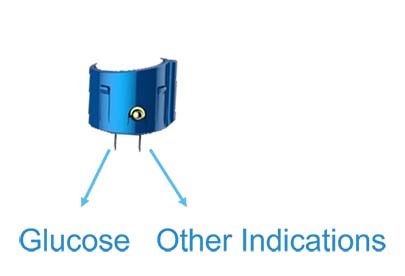Our biosensing platform could be utilized to detect and analyze specific biological molecules or events. It’s designed to provide real-time or near-real-time information about these biological markers small enough present in interstitial fluid. Biosensing platforms are consist of following components:
Biological Sensors: These are the core elements of the biosensing platform. Biological sensors can be antibodies, enzymes, or other molecules that specifically bind to the target analyte (e.g., glucose, nucleic acids, or small molecules). The binding event leads to a measurable signal.
Transducer: The transducer is responsible for converting the biological interaction into a measurable signal. Common transduction methods include optical, electrochemical, piezoelectric, or magnetic techniques.
Signal Processing: Biosensing platforms typically include signal processing components to enhance the detection and analysis of the signals produced by the transducer. This may involve data processing algorithms, electronics, to improve signal-to-noise ratios and accuracy.
Microfluidics: In some biosensing platforms, microfluidic systems are integrated to control the flow of biological samples and reagents. It can enhance the efficiency and sensitivity of the biosensing process.
Data Analysis and Connectivity: Biosensing platforms often include software for data analysis and interpretation. Connectivity features may allow the platform to interface with other devices, databases, or networks for further processing or remote monitoring.
Application-Specific Configurations: Biosensing platforms can be tailored for specific applications. For example, some are designed for diagnostics to detect cardio or oncology biomarkers.
Point-of-Care (POC) Devices: Some biosensing platforms are developed as point-of-care devices, allowing for rapid and on-site testing without the need for extensive laboratory equipment. This is particularly valuable in healthcare settings.
Multiplexing: Advanced biosensing platforms may support multiplexing, allowing the simultaneous detection of multiple analytes in a single sample. This capability is valuable in scenarios where the presence of multiple targets needs to be assessed.
Biosensing platforms play a crucial role in advancing fields such as personalized medicine, disease diagnostics, and environmental monitoring by providing rapid and accurate detection of specific biological markers or substances.

